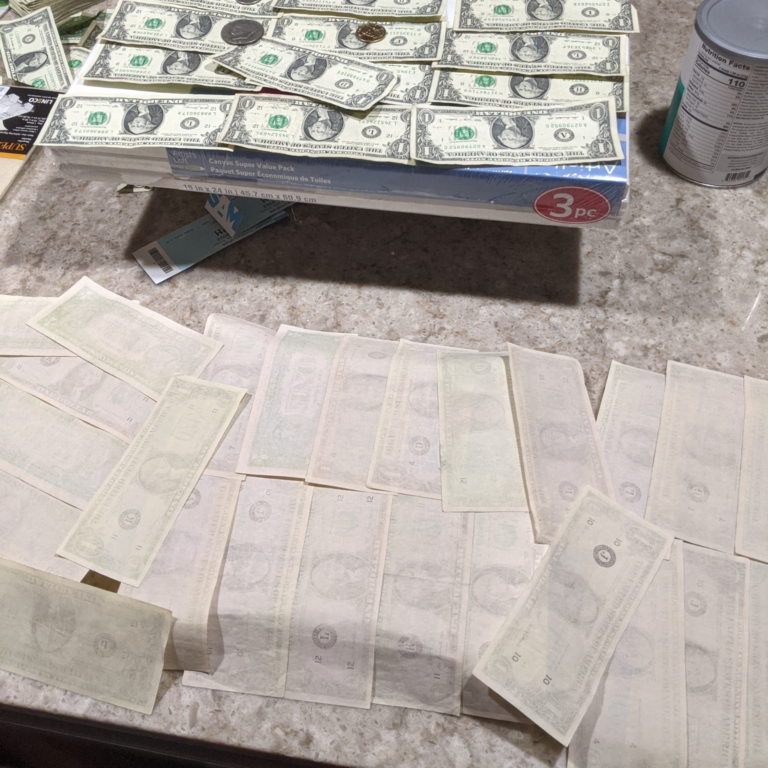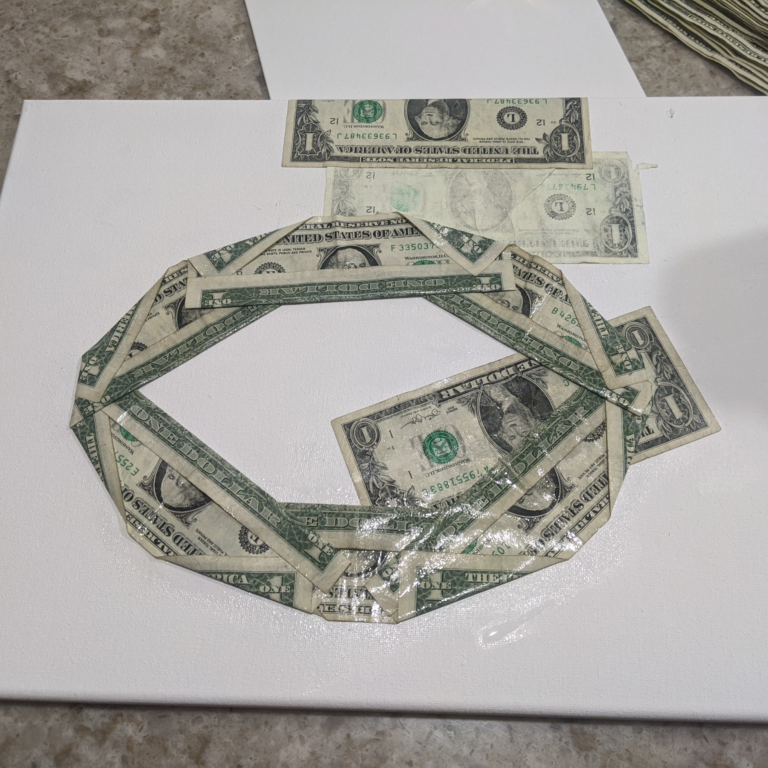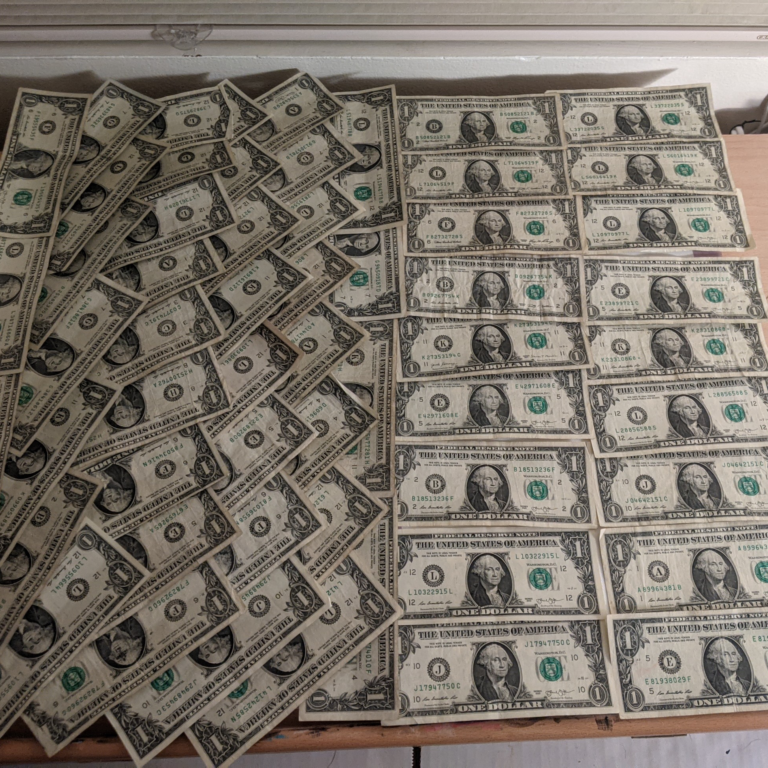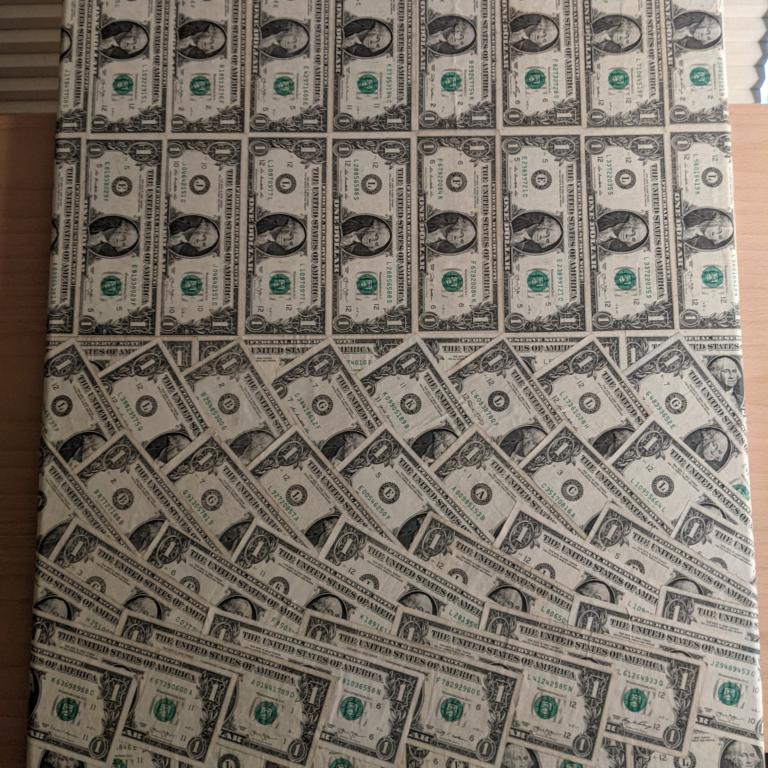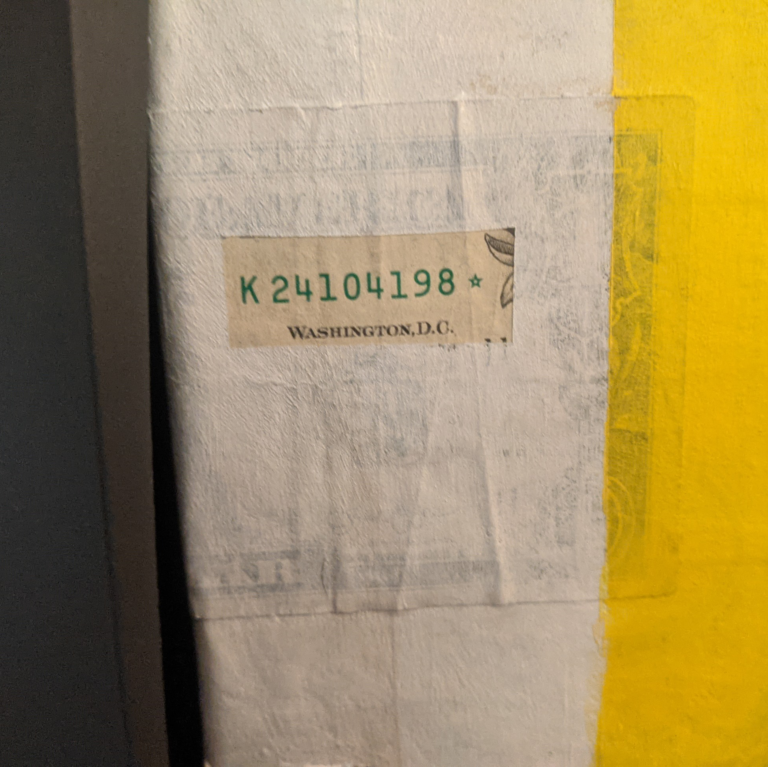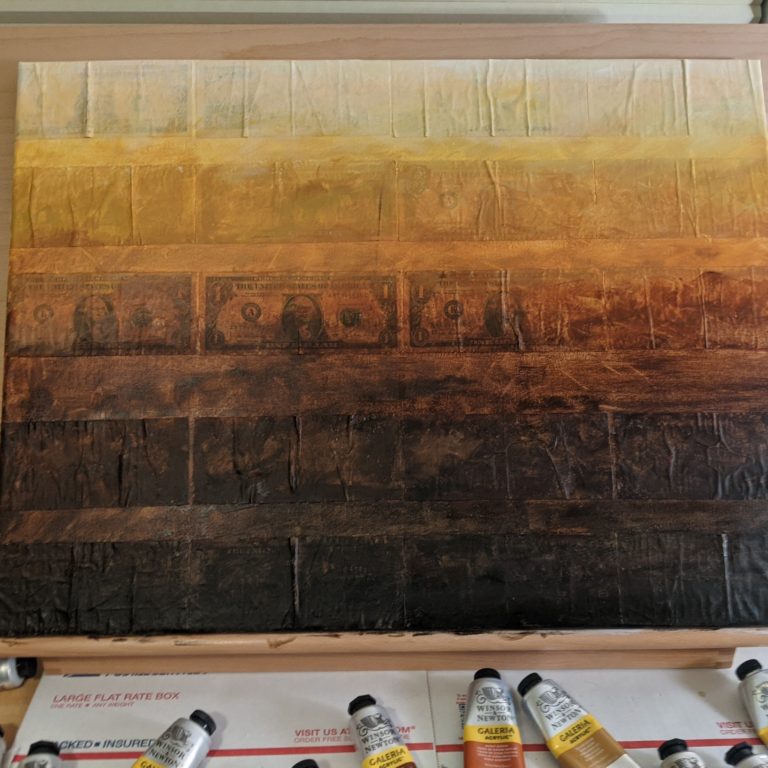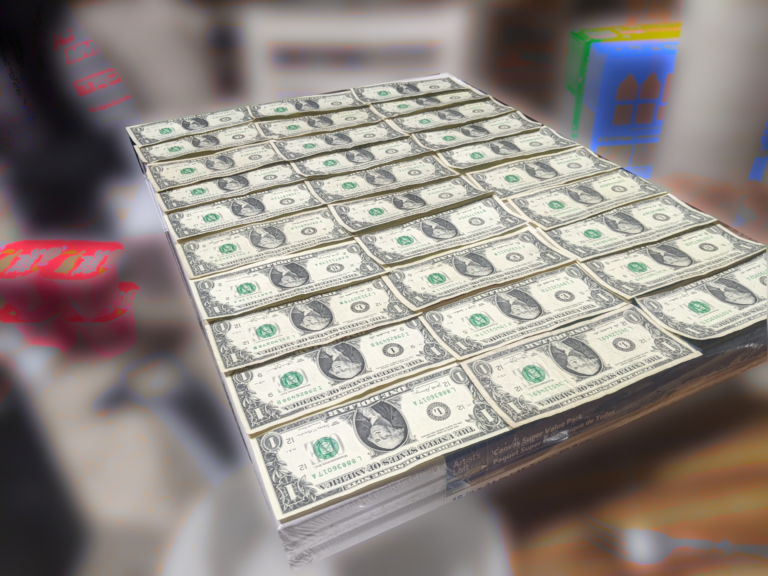Selecting and preparing a canvas is a challenge using traditional materials. The addition of new materials makes this process more difficult. Paper money is made from several materials, the most basic of which is not paper! It starts from cotton, like cloth, so that it does not deteriorate when wet like paper does. Then it is treated with a variety of chemicals and dyes designed to withstand removal or modification. These properties make applying and painting on money very different from a standard stretched canvas. It also affords the artist the opportunity to use these properties to their advantage, allowing for color and texture variations that give depth and character to the art.
Adding “paper” money to a canvas is an involved process. As can be seen above, the material used to make paper money is designed to absorb the dyes used when the money is printed. It is also designed to make it difficult to alter or remove the dye. This is an anti-counterfeiting measure.
However, for art purposes, removing or adding color to the fabric of the money is the primary goal. Since the money is not actually paper but a cotton material like canvas, treating it properly and understanding how it will absorb paint and whether the dyes on the money will alter the colors layered above them is key to producing the desired result.

